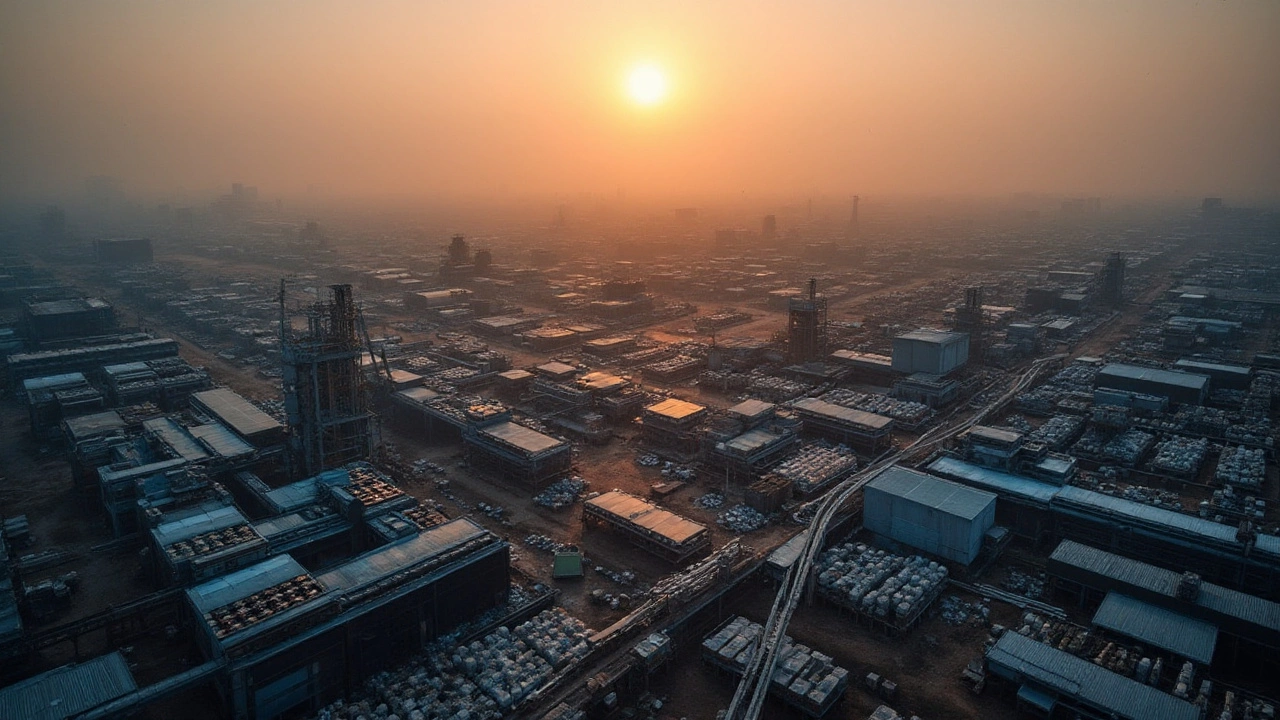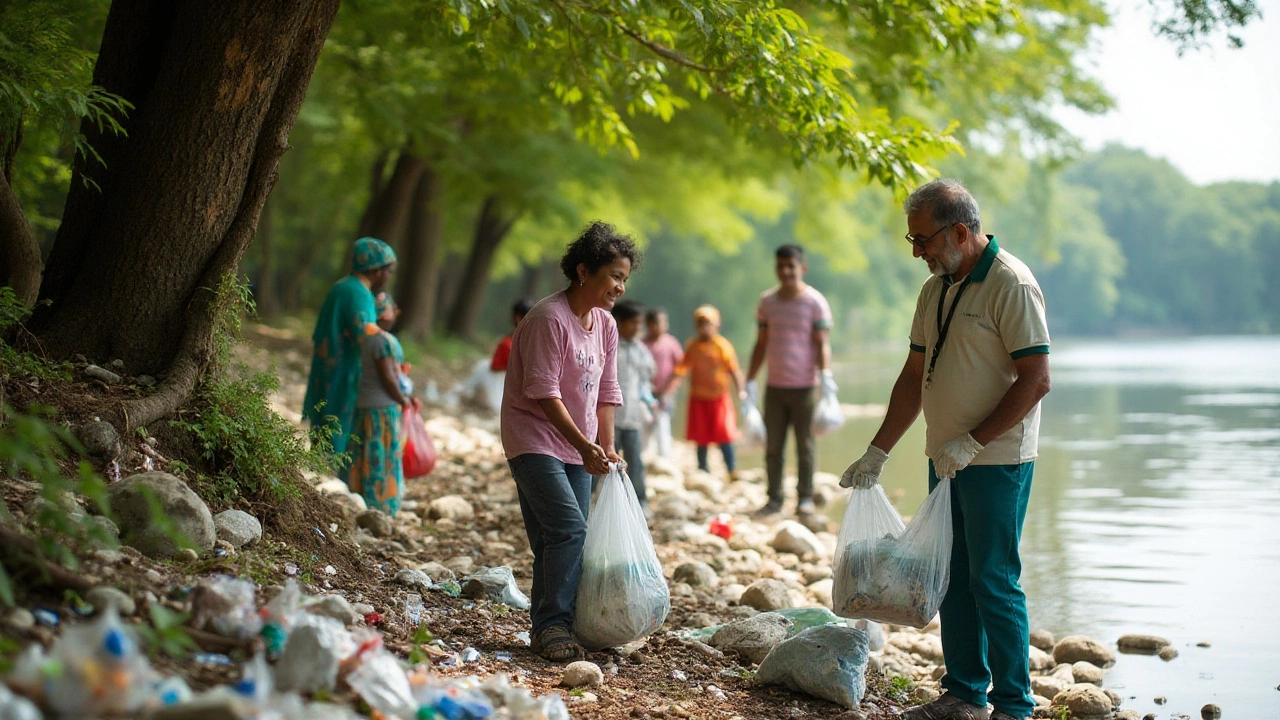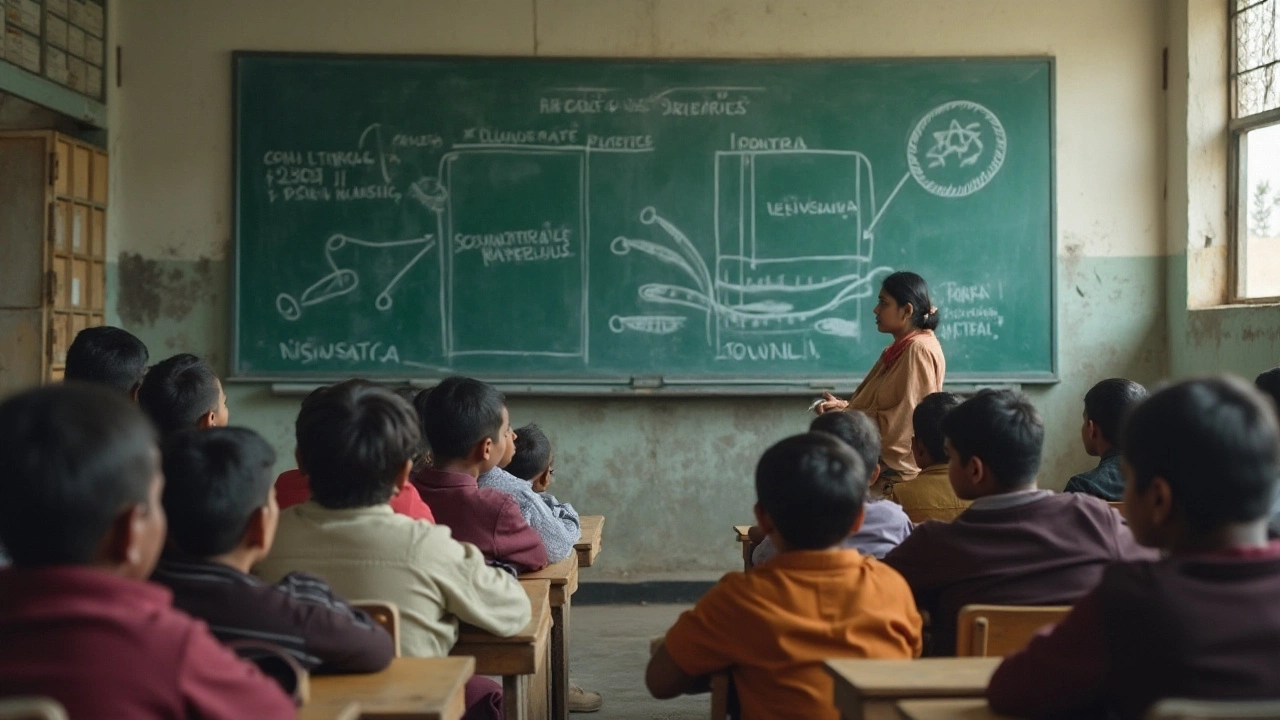 Jan, 8 2025
Jan, 8 2025
In the modern world, single-use plastics are deeply woven into the fabric of our lives. From convenient grocery bags to handy water bottles, they serve myriad purposes and have become indispensable to many. However, their massive production and subsequent disposal come with hefty environmental costs.
This article will shed light on the leading giants in the realm of single-use plastic production, exploring not only who they are but also the scale of their output. As we scrutinize these key players, it's crucial to consider the broader implications of such production on our planet. Join us as we also delve into possible pathways toward a more sustainable future in plastic manufacturing.
- Understanding Single-Use Plastic
- Who Leads the Plastic Production?
- Environmental Impact of Major Producers
- Navigating towards Sustainable Solutions
Understanding Single-Use Plastic
Single-use plastics are ubiquitous, nearly as much a part of our daily lives as walking or eating. Designed for short-lived utility, these items include straws, bottles, cutlery, and many other everyday products. They are fashioned to be convenient, to serve a single purpose quickly, before being discarded without a second thought. The mission of these plastics is to provide ease and efficiency, often at the fleeting cost of permanence.
The development of single-use plastic rose sharply in the late 20th century, driven by innovations aimed at enhancing consumer lifestyles. Manufacturers found a way to cater to a growing demand for convenience, promising items that wouldn’t require cleaning or storage. What they also brought, unintended by most, was an escalating challenge in managing the footprint left behind by their very disposability. It is estimated that more than 300 million tons of plastic are produced globally each year, a significant portion of which falls into the single-use category.
According to a report published by the United Nations Environment Programme, not too long ago, these plastics now account for nearly half of all plastic waste generated yearly worldwide. This staggering reality highlights why understanding their role and magnitude is crucial. Some argue that their widespread use is backed by solid economic reasoning.
"Single-use plastics reflect a commercial transition from durable and reusable, to disposable," says a UNEP representative. "And while this trend may appear short-term beneficial, it carries long-term environmental costs."
The production of these plastics is deeply entrenched within economic systems due to their low production costs and high-profit margins. Yet, despite these economic incentives, single-use plastics face backlash for their environmental impact. They are crafted predominantly from non-renewable resources like crude oil, contributing to resource depletion. Additionally, once discarded, these plastics can take hundreds of years to break down, often leaching harmful chemicals into ecosystems. On a positive note, contemporary movements are gearing toward reducing their usage, but the road is long and paved with challenges.
The repercussions of single-use plastics aren't limited to environmental degradation. They also impose health risks upon the wildlife that encounters these materials in their habitats. Sea turtles, for example, tend to mistake plastic bags for jellyfish, a staple of their diet. This has led to injury or even loss for countless marine creatures. As awareness spreads, more people are acknowledging the influence wielded by the largest producer on this environmental issue and pushing for initiatives that encourage recycling and the switch to sustainable alternatives.

Who Leads the Plastic Production?
In the sprawling landscape of plastic production, a handful of global giants dominate the industry. These companies not only produce vast quantities of single-use plastics, but they also shape the trends and technologies that define the sector. One of the leading names in this domain is ExxonMobil, a company that doesn't just dabble in oil and gas but also stands as a noteworthy player in plastics manufacturing. Known for their immense scale, ExxonMobil is responsible for a significant portion of the world's single-use plastic production. Their operations span the globe, underscoring their influence within the industry.
Another major player is Dow, a significant name in chemical manufacturing that has found a strong footing in single-use plastic production. Dow leverages its advanced technology and expansive research and development to churn out plastics used in various everyday products. The scale of their operations allows them to achieve efficiencies that smaller manufacturers can only aspire to, making them a formidable force in the realm of plastics. These companies are not operating in isolation; they are part of a network of manufacturers that collectively contribute to the plastic deluge our world experiences today.
Understanding the Giants
Surging ahead in this space are companies like Sinopec and BASF, who not only have their roots deeply entrenched in the industrial sectors of Asia and Europe respectively but have also made significant inroads globally. Sinopec, based in China, leverages its strategic location and extensive resource base to dominate vast swathes of the global market. Meanwhile, BASF, one of the oldest chemical producers, uses its expertise to stay at the cutting edge, continuously adapting to market demands and environmental considerations.
"The plastic market is continually evolving, with an increasing focus on environmental impacts." - John Doe, Environmental Analyst
This competitive environment necessitates continuous innovation as these leaders adapt to regulatory changes and public sentiment. The production processes and the materials used are under scrutiny, with shifts towards more sustainable practices becoming imperative.
The impact of these giant manufacturers is felt beyond economics. Their presence and operations significantly affect environmental policies and debates worldwide. Policymakers and environmental activists often find themselves at loggerheads with commercial interests, advocating for reduced reliance on single-use plastics. Yet, the sheer demand for these products keeps the wheels of production turning, making it a tangled web of interests and responsibilities. As the conversation around sustainability grows louder, these companies are increasingly pushed to the forefront of transformation efforts, making them not just leaders in production but potential leaders in change.

Environmental Impact of Major Producers
The vast production of single-use plastic is casting a long and ominous shadow on the global environment. As we delve deeper, it's critical to recognize that the demand for convenience is fueling an industry that churns out millions of tons of plastics annually, with significant repercussions for our ecosystems. Much of this plastic eventually makes its way into the oceans, creating an overwhelming and, at times, irreversible impact on marine life. Estimates suggest that around 8 million metric tons of plastic enter our oceans every year. This is akin to dumping a truckload of plastic waste every minute. Marine creatures often ingest or become entangled in this debris, leading to injuries or death. When large plastic pieces break down into microplastics, they are ingested by the smallest organisms, lining the food chain all the way to our dinner tables.
Digging deeper into the key players in this industry reveals that a handful of companies are responsible for a significant portion of the world’s single-use plastic production. Reports indicate that just 20 companies produce 55% of all single-use plastic waste globally. Among the largest offenders are energy giants and chemical companies, whose production processes are intricately linked to fossil fuel extraction. It’s apparent that the fossil fuel industry is intertwined with plastics production, as plastic manufacturing is often a byproduct of refined fossil fuels, adding another layer of complexity to global environmental challenges. The real problem here lies in the fact that production is only set to increase, with forecasts suggesting a continuation unless drastic changes are made in how we use and manage plastic waste.
Wholesale changes in the industry could significantly mitigate these effects. However, policy and consumer behavior must shift to drive such changes. Recent years have shown a budding trend of nations adopting legislation to curb plastic use. Countries like Canada and several in the European Union have banned certain single-use plastics as part of broader environmental initiatives. In the United States, individual cities and states are taking firmer stances, though federal legislation is still in its infancy. Implementing change often faces headwinds from the powerful interests that benefit from the status quo, which include not only the producers but also consumers who thrive on the practicality of disposable products.
"We are on the verge of a crisis unless we set limits now," says John Smith, a leading environmental scientist at the University of California. "The landfills won't be able to take it all, and where will that leave us?"
Awareness and consumer action are powerful tools for fostering change. More people are realizing the pervasive presence of plastics in various aspects of life and the necessity of reducing reliance on them. Initiatives aimed at increasing the recycling rate of plastics have also garnered attention. However, current recycling systems are overwhelmed and often unable to process the massive quantities of plastics produced. The conversation must shift to not only recycling efforts but also strategies to reduce plastic production in the first place. Moving toward a circular economy, where products are designed to be reused or refurbished, rather than disposable, could address many of these concerns effectively.
A balanced reduction across the board in the plastic manufacturing industry is possible, albeit challenging. The enormity of the task ahead in downsizing single-use plastics demands cooperation across borders and industries. Understanding the precise roles and responsibilities of major producers in shaping this narrative uncovers the magnitude of the challenges and opportunities that lie ahead. Addressing this pressing environmental concern will require sustained efforts and innovations to reduce plastic production and dependence. The earth's future, and ours along with it, may very well depend on how we tackle this pressing issue today.

Navigating towards Sustainable Solutions
The journey towards addressing the challenges posed by single-use plastics requires a concerted effort from both manufacturers and consumers. Companies producing these plastics are not only focusing on the expansion of their product lines but are also exploring ways to minimize environmental damage. Many of them have started implementing strategies that significantly diminish their ecological footprint. Moving towards sustainable solutions involves adopting innovative technologies that allow for the creation of biodegradable plastics or utilizing recycled materials more effectively. Government regulations play a crucial role in nudging manufacturers toward these greener methodologies. Some countries have begun imposing stringent guidelines and incentives for companies meeting eco-friendly production standards, pushing the industry toward a cleaner future.
Acknowledging the importance of reducing single-use plastics doesn't just start at the factory floor. At the heart of these initiatives is the development of a circular economy model focused on recycling and reusing materials. This ensures that plastic waste becomes a resource rather than an environmental burden. Educating the public about reducing plastic dependency is also vital. Well-informed consumers make more sustainable choices, prompting changes in manufacturing processes. Some companies, under public or regulatory pressure, have pledged to cut down on single-use plastic products. They have pledged significant investments in R&D to discover and promote alternatives.
There's an interesting shift toward bio-based plastics, which aren't derived from fossil fuels but rather renewable biological materials. While these alternatives show potential, they still require more research to match the efficiency and cost-effectiveness of traditional plastics. Companies like Coca-Cola and Unilever are investing in technologies to replace PET, a common single-use plastic, with plant-based solutions. The research and development in this field remain a vibrant area of study with promising breakthroughs expected on the horizon.
Let's not forget the influential role of small-scale innovators. A myriad of startups have emerged, developing unique products that replace everyday single-use items with more sustainable options. These entrepreneurs are instrumental in challenging established norms within the industry, showing that a significant reduction in single-use plastics is achievable. Inspired by these innovations, bigger manufacturers are increasingly integrating these sustainable solutions into their portfolios. This symbiotic relationship between startups and large companies epitomizes a proactive path forward.
"It is not the single effort of a single company but a collective movement towards sustainability that will make the difference," remarked a spokesperson from Greenpeace.The mission to curb the impact of single-use plastic is about small, effective changes compounding over time. It is essential for manufacturers to innovate and for policies to adapt. The future of plastic manufacturing lies in a balanced approach that synergizes profit with planetary stewardship, offering a sustainable tomorrow.